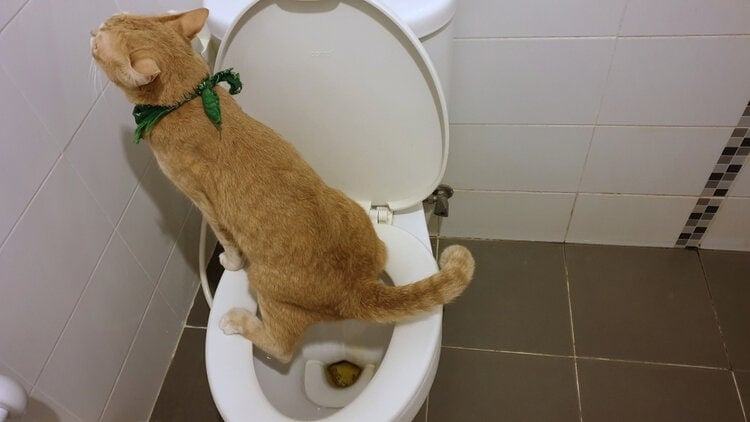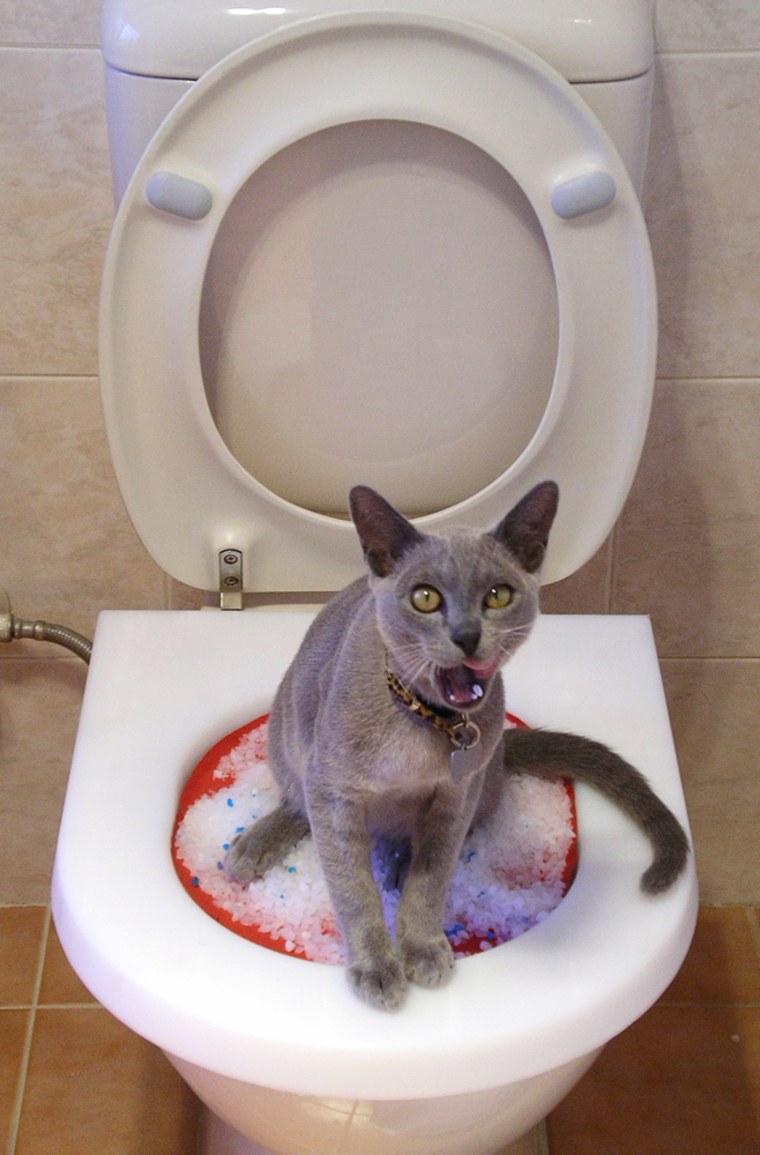Highly-Rated Explanations to Prevent Flushing Animal Waste Down the Toilet
Highly-Rated Explanations to Prevent Flushing Animal Waste Down the Toilet
Blog Article
The content following next pertaining to Don't Flush Your Pets Poo Down The Loo, Vet Warns is fairly motivating. Give it a try and make your own personal conclusions.

When it comes to taking care of waste, especially animal waste, many people typically consider the convenient choice of flushing it down the toilet. Nonetheless, this relatively simple service can have major effects for the setting and public health. In this article, we'll discover why flushing animal waste down the toilet is a bad concept and provide alternative techniques for appropriate disposal.
Introduction
Appropriate waste disposal is vital for preserving environmental sustainability and public health. While it may seem safe to purge animal waste down the bathroom, it can result in various concerns, both for the atmosphere and human well-being.
Risks of flushing pet waste
Ecological impact
Purging animal waste introduces unsafe germs and pathogens right into waterways, which can adversely impact aquatic ecosystems. These virus can contaminate water resources and injury marine life, interfering with delicate ecological communities.
Public health problems
Pet waste has dangerous microorganisms such as E. coli and Salmonella, which can present severe health and wellness dangers to people. Purging pet waste down the toilet can contaminate water materials, leading to the spread of diseases and infections.
Alternatives to flushing
Instead of flushing animal waste down the toilet, there are a number of alternate disposal techniques that are much more environmentally friendly and hygienic.
Composting
Composting animal waste is a green method to throw away it. By composting, raw material is broken down into nutrient-rich soil, which can be made use of to feed yards and plants.
Landfill disposal
Getting rid of animal waste in a landfill is an additional option. While not as eco-friendly as composting, it is a much safer alternative to flushing, as it prevents the contamination of water resources.
Animal garbage disposal systems
There are specific pet garbage disposal systems available that securely and hygienically throw away animal waste. These systems commonly use enzymes to break down waste and get rid of smells.
Steps to proper pet garbage disposal
To ensure proper disposal of animal waste, comply with these actions:
Scooping and bagging waste
On a regular basis scoop and bag pet waste making use of biodegradable bags. This avoids waste from polluting the atmosphere.
Utilizing marked waste containers
Dispose of bagged pet waste in marked waste containers, such as garden compost containers or garbage dump bins. Avoid flushing it down the toilet in all prices.
Cleaning can and pet dog locations frequently
Frequently clean litter boxes and pet dog areas to prevent the accumulation of waste and bacteria. Usage pet-safe cleaning items to maintain health.
Benefits of appropriate disposal approaches
Taking on appropriate disposal approaches for animal waste uses several benefits:
Lowered environmental pollution
Proper disposal techniques lower the risk of environmental pollution, securing rivers and environments from contamination
Minimized risk of water contamination.
By preventing flushing pet waste down the toilet, the risk of water contamination is significantly minimized, securing public health.
Enhanced hygiene and health
Proper disposal techniques promote much better sanitation and health, producing a more secure setting for both human beings and pets.
Final thought
To conclude, purging pet waste down the bathroom is dangerous to the atmosphere and public health. By embracing alternative more info disposal approaches and complying with appropriate waste management techniques, we can reduce the negative effect of animal waste and contribute to a cleaner, much healthier world.
What To Do With Dog Poo – The Do's And Don'ts Of Disposing Of Faeces
Dog poo bins
Some councils provide dedicated dog waste bins in popular dog-walking areas that can take dog poo that has been bagged but you can legally dispose of dog waste in any public litter bin, as long as it is securely bagged. This also applies to your wheelie bin at home.
Do not flush
Water companies do not recommend flushing dog faeces down the toilet because certain parasites can survive the water processing treatment and are potentially harmful to humans. You should also never consider flushing dog poo that has been bagged down the toilet as the bags will not break down and instead create severe blockages in the sewage system.
In the woods
The Forestry Commission promotes a ‘stick and flick’ method for dealing with waste in the woods. This means finding a stick and using it to flick any poo from off the path so that it is out of the way of other walkers. You could also bury it as long as it is not in an area where there might be livestock.
Livestock
Parasites found in dog poo can be transmitted to livestock if they inadvertently eat infected faeces that has been left on grazing land. This could result in the death of sheep or abortion in cattle so you should always make sure you pick up your dog’s waste in fields where livestock could be present.

Frequently clean litter boxes and pet dog areas to prevent the accumulation of waste and bacteria. Usage pet-safe cleaning items to maintain health.
Benefits of appropriate disposal approaches
Taking on appropriate disposal approaches for animal waste uses several benefits:
Lowered environmental pollution
Proper disposal techniques lower the risk of environmental pollution, securing rivers and environments from contamination
Minimized risk of water contamination.
By preventing flushing pet waste down the toilet, the risk of water contamination is significantly minimized, securing public health.
Enhanced hygiene and health
Proper disposal techniques promote much better sanitation and health, producing a more secure setting for both human beings and pets.
Final thought
To conclude, purging pet waste down the bathroom is dangerous to the atmosphere and public health. By embracing alternative more info disposal approaches and complying with appropriate waste management techniques, we can reduce the negative effect of animal waste and contribute to a cleaner, much healthier world.
What To Do With Dog Poo – The Do's And Don'ts Of Disposing Of Faeces
Dog poo bins
Some councils provide dedicated dog waste bins in popular dog-walking areas that can take dog poo that has been bagged but you can legally dispose of dog waste in any public litter bin, as long as it is securely bagged. This also applies to your wheelie bin at home.
Do not flush
Water companies do not recommend flushing dog faeces down the toilet because certain parasites can survive the water processing treatment and are potentially harmful to humans. You should also never consider flushing dog poo that has been bagged down the toilet as the bags will not break down and instead create severe blockages in the sewage system.
In the woods
The Forestry Commission promotes a ‘stick and flick’ method for dealing with waste in the woods. This means finding a stick and using it to flick any poo from off the path so that it is out of the way of other walkers. You could also bury it as long as it is not in an area where there might be livestock.
Livestock
Parasites found in dog poo can be transmitted to livestock if they inadvertently eat infected faeces that has been left on grazing land. This could result in the death of sheep or abortion in cattle so you should always make sure you pick up your dog’s waste in fields where livestock could be present.

I found that post on Can You Flush Dog and Cat Poo Down the Toilet? while doing a search on the search engines. Those who enjoyed our blog entry please do not forget to pass it around. Many thanks for being here. Revisit us soon.
Go Company Report this page